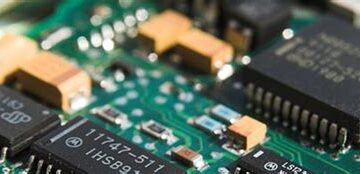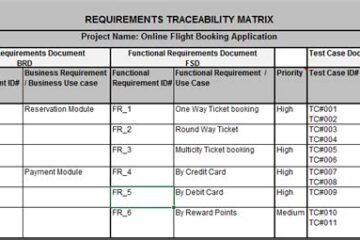Introduction to SnapEDA and Nexar
SnapEDA is a leading provider of electronic design automation (EDA) solutions, offering a comprehensive library of computer-aided design (CAD) models for electronic components. These models are essential for engineers and designers working on printed circuit board (PCB) designs, as they provide accurate representations of components, enabling seamless integration into design tools.
Nexar, on the other hand, is a prominent platform that connects the electronics industry, providing tools and resources to streamline the design and manufacturing process. By collaborating with various partners, Nexar aims to create an ecosystem that fosters innovation and efficiency in the electronics sector.
The SnapEDA-Nexar Partnership
Recently, SnapEDA and Nexar announced a strategic partnership that aims to revolutionize the PCB design process by combining their expertise and resources. This collaboration will allow Nexar users to access SnapEDA’s extensive library of verified CAD models directly through the Nexar platform.
Benefits of the Partnership
The SnapEDA-Nexar partnership brings numerous benefits to engineers and designers working on PCB projects:
-
Access to a vast library of CAD models: SnapEDA boasts a library of over 1 million CAD models, covering a wide range of electronic components from various manufacturers. This partnership enables Nexar users to tap into this valuable resource, saving time and effort in sourcing accurate models.
-
Streamlined design process: By integrating SnapEDA’s CAD models into the Nexar platform, designers can seamlessly incorporate these models into their PCB designs. This eliminates the need to switch between multiple tools and platforms, resulting in a more efficient and streamlined design process.
-
Enhanced collaboration: Nexar’s platform is built on the principles of collaboration and knowledge sharing. With the integration of SnapEDA’s CAD models, designers can easily share their designs with team members, suppliers, and manufacturers, fostering better communication and reducing the likelihood of errors.
-
Improved design accuracy: SnapEDA’s CAD models are thoroughly verified and updated regularly to ensure accuracy and compatibility with the latest design tools. By leveraging these high-quality models, designers can minimize the risk of design errors and improve the overall quality of their PCB projects.
-
Time and cost savings: Sourcing and creating CAD models from scratch can be a time-consuming and costly process. With the SnapEDA-Nexar partnership, designers can access a ready-made library of models, reducing the time and resources required for model creation and verification.
Impact on PCB Design and Innovation
The SnapEDA-Nexar partnership has the potential to significantly impact the PCB design landscape and drive innovation in the electronics industry:
-
Accelerated design cycles: With access to a comprehensive library of CAD models, designers can focus more on the creative aspects of their projects rather than spending time on mundane tasks such as model creation. This can lead to faster design cycles and quicker time-to-market for new products.
-
Increased design flexibility: The extensive range of CAD models available through the partnership enables designers to explore various component options and experiment with different design configurations. This flexibility can foster innovation and encourage the development of novel solutions.
-
Lower entry barriers: For small and medium-sized enterprises (SMEs) and individual designers, access to high-quality CAD models can be a significant challenge due to the associated costs and resources required. The SnapEDA-Nexar partnership helps level the playing field by providing affordable access to a vast library of models, empowering smaller players to compete and innovate.
-
Improved industry collaboration: Nexar’s platform is designed to facilitate collaboration and knowledge sharing among industry stakeholders. By integrating SnapEDA’s CAD models into this ecosystem, the partnership encourages greater collaboration between designers, manufacturers, and suppliers, leading to more efficient and innovative solutions.
The Role of CAD Models in PCB Design
CAD models play a crucial role in the PCB design process, serving as digital representations of electronic components. These models contain essential information such as component dimensions, pin configurations, and electrical characteristics.
Types of CAD Models
There are several types of CAD models used in PCB design:
-
2D models: These models provide a flat, two-dimensional representation of components, including their footprints and pin layouts. 2D models are commonly used in schematic capture and PCB layout software.
-
3D models: Three-dimensional models offer a more realistic and detailed representation of components, displaying their height, shape, and overall appearance. 3D models are valuable for visualizing the final product and checking for potential mechanical interferences.
-
STEP models: STEP (Standard for the Exchange of Product Data) models are a widely used format for exchanging 3D CAD data between different software systems. They provide an accurate and standardized representation of components, ensuring compatibility across various design tools.
-
Parametric models: Parametric CAD models allow designers to modify certain aspects of the component, such as dimensions or pin configurations, based on predefined parameters. This flexibility enables designers to create custom variations of components to suit their specific needs.
Benefits of Using CAD Models
Using accurate and up-to-date CAD models in PCB design offers several benefits:
-
Design accuracy: CAD models provide precise representations of components, ensuring that the designed PCB matches the physical dimensions and characteristics of the actual components. This accuracy reduces the risk of design errors and incompatibilities.
-
Time savings: By using pre-verified CAD models, designers can save significant time that would otherwise be spent on creating models from scratch or manually verifying component data. This efficiency gain allows for faster design iterations and shorter overall project timelines.
-
Improved collaboration: CAD models serve as a common language for communication between designers, manufacturers, and suppliers. By sharing standardized models, all stakeholders can work with the same accurate data, reducing the chances of miscommunication and errors.
-
Enhanced visualization: 3D CAD models provide a realistic representation of components, allowing designers to visualize the final product and identify potential issues early in the design process. This visualization capability can also be valuable for presenting designs to clients or stakeholders.
-
Compatibility with design tools: CAD models are designed to be compatible with various PCB design software, enabling seamless integration into the design workflow. This compatibility ensures that designers can use their preferred tools without the need for manual data entry or format conversions.

SnapEDA’s Library of CAD Models
SnapEDA’s library is one of the largest and most comprehensive collections of CAD models for electronic components. With over 1 million models covering a wide range of component categories, SnapEDA provides designers with a reliable source of accurate and up-to-date models.
Key Features of SnapEDA’s Library
-
Extensive coverage: SnapEDA’s library covers a vast array of electronic components, including connectors, capacitors, resistors, inductors, transistors, and integrated circuits (ICs) from leading manufacturers worldwide.
-
Verified models: All CAD models in SnapEDA’s library undergo a rigorous verification process to ensure accuracy and compatibility with industry standards. This verification process involves collaboration with component manufacturers and user feedback to maintain the highest quality standards.
-
Regular updates: SnapEDA’s team continuously updates the library with new models and revisions to existing models based on the latest component data from manufacturers. This ensures that designers have access to the most current and accurate information for their projects.
-
Multiple file formats: CAD models in SnapEDA’s library are available in various popular file formats, including STEP, IGES, and DXF for 3D models, and Altium, Eagle, KiCad, and OrCAD for PCB design software. This multi-format support ensures compatibility with a wide range of design tools.
-
Parametric models: SnapEDA offers parametric CAD models for certain components, allowing designers to customize dimensions and configurations based on their specific requirements. This flexibility enables the creation of bespoke components without the need for manual model creation.
-
User contributions: In addition to the models created by SnapEDA’s team, the library also includes user-contributed models. This community-driven approach expands the coverage of the library and ensures that designers have access to a diverse range of components.
Accessing SnapEDA’s Library
Designers can access SnapEDA’s library through various channels:
-
SnapEDA website: The SnapEDA website (www.snapeda.com) serves as the primary platform for accessing the CAD model library. Users can search for specific components, browse through categories, and download models in their desired file formats.
-
Plugin integrations: SnapEDA offers plugin integrations for popular PCB design software such as Altium, Eagle, and KiCad. These plugins allow designers to search and download models directly from within their design environment, streamlining the component selection and placement process.
-
API access: For companies and organizations with specific integration requirements, SnapEDA provides API access to their library. This enables the development of custom tools and workflows that leverage SnapEDA’s CAD models programmatically.
-
Nexar platform: With the SnapEDA-Nexar partnership, designers can now access SnapEDA’s library directly through the Nexar platform. This integration provides a seamless experience for Nexar users, allowing them to incorporate high-quality CAD models into their designs without leaving the platform.
The Future of PCB Design with SnapEDA and Nexar
The SnapEDA-Nexar partnership represents a significant step forward in the evolution of PCB design. By combining SnapEDA’s extensive library of CAD models with Nexar’s collaborative platform, the partnership aims to create a comprehensive ecosystem that empowers designers to create innovative and efficient electronic products.
Emerging Trends in PCB Design
The electronics industry is constantly evolving, driven by advancements in technology and changing market demands. Some of the emerging trends in PCB design that the SnapEDA-Nexar partnership is well-positioned to address include:
-
Miniaturization: As electronic devices become smaller and more compact, PCB designers face the challenge of accommodating complex functionality in limited space. Access to accurate and detailed CAD models is crucial for designing high-density PCBs that meet these miniaturization requirements.
-
High-speed designs: With the increasing demand for faster data transfer rates and higher bandwidths, PCB designers must tackle the challenges associated with high-speed designs. Accurate CAD models that incorporate signal integrity and electromagnetic compatibility (EMC) considerations are essential for designing reliable high-speed circuits.
-
Internet of Things (IoT): The proliferation of IoT devices has created a need for PCB designs that are optimized for low power consumption, wireless connectivity, and sensor integration. The SnapEDA-Nexar partnership can provide designers with the necessary CAD models and resources to develop IoT-ready PCBs efficiently.
-
Modular and flexible designs: Modular and flexible PCB designs are gaining traction as they allow for easier customization, upgrades, and maintenance. The availability of parametric CAD models through SnapEDA’s library enables designers to create modular components that can be easily adapted to different design configurations.
-
Sustainable and eco-friendly designs: As environmental concerns gain prominence, there is a growing emphasis on designing PCBs that are sustainable and eco-friendly. This includes the use of recyclable materials, reduction of hazardous substances, and designing for energy efficiency. The SnapEDA-Nexar partnership can support designers in making informed choices about component selection and design practices that promote sustainability.
Future Collaboration and Expansion
The SnapEDA-Nexar partnership opens up exciting possibilities for further collaboration and expansion:
-
Integration with other design tools: As the partnership evolves, there is potential for integrating SnapEDA’s CAD models with other popular design tools and platforms beyond the current Nexar ecosystem. This expansion would provide designers with even greater flexibility and access to high-quality models across various tools.
-
Collaboration with component manufacturers: SnapEDA and Nexar can work closely with component manufacturers to develop more comprehensive and up-to-date CAD model libraries. This collaboration can involve the creation of custom models for new components, ensuring that designers have access to the latest technology advancements.
-
Educational resources and training: The partnership can extend its reach by offering educational resources and training materials related to PCB design and the effective use of CAD models. This can include tutorials, webinars, and workshops aimed at helping designers enhance their skills and stay current with industry best practices.
-
Expansion into other domains: While the initial focus of the SnapEDA-Nexar partnership is on PCB design, there is potential for expanding the collaboration into other domains such as mechanical design, system-level modeling, and simulation. This expansion can create a more comprehensive and integrated design ecosystem that spans multiple disciplines.
Frequently Asked Questions (FAQ)
-
What is the SnapEDA-Nexar partnership?
The SnapEDA-Nexar partnership is a collaboration between SnapEDA, a provider of CAD models for electronic components, and Nexar, a platform that connects the electronics industry. This partnership aims to provide Nexar users with access to SnapEDA’s extensive library of verified CAD models directly through the Nexar platform. -
How can designers access SnapEDA’s CAD models through Nexar?
Designers can access SnapEDA’s CAD models directly through the Nexar platform. This integration allows Nexar users to search, browse, and download models from SnapEDA’s library without leaving the Nexar environment. -
What types of CAD models are available through SnapEDA’s library?
SnapEDA’s library offers a wide range of CAD model types, including 2D models (footprints and symbols), 3D models, STEP models, and parametric models. These models cover various electronic component categories such as connectors, capacitors, resistors, inductors, transistors, and integrated circuits (ICs). -
Are the CAD models in SnapEDA’s library verified for accuracy?
Yes, all CAD models in SnapEDA’s library undergo a rigorous verification process to ensure accuracy and compatibility with industry standards. SnapEDA collaborates with component manufacturers and incorporates user feedback to maintain the highest quality standards for their models. -
How can the SnapEDA-Nexar partnership benefit PCB designers?
The SnapEDA-Nexar partnership offers several benefits to PCB designers, including access to a vast library of verified CAD models, streamlined design processes, enhanced collaboration, improved design accuracy, and time and cost savings. By leveraging the resources provided through this partnership, designers can focus on innovation and accelerate their design cycles.
Conclusion
The SnapEDA-Nexar partnership represents a significant milestone in the advancement of PCB design and innovation. By combining SnapEDA’s comprehensive library of verified CAD models with Nexar’s collaborative platform, this partnership empowers designers to create high-quality, accurate, and efficient PCB designs.
As the electronics industry continues to evolve, with trends such as miniaturization, high-speed designs, IoT, modular and flexible designs, and sustainable practices, the SnapEDA-Nexar partnership is well-positioned to support designers in navigating these challenges. By providing access to a vast library of CAD models, fostering collaboration, and promoting innovation, this partnership has the potential to revolutionize the way PCBs are designed and manufactured.
Looking ahead, the SnapEDA-Nexar partnership has the opportunity to expand its reach and impact through further collaborations, integrations with other design tools, educational initiatives, and expansion into adjacent domains. As the partnership grows and evolves, it will continue to play a crucial role in shaping the future of PCB design and driving innovation in the electronics industry.



0 Comments